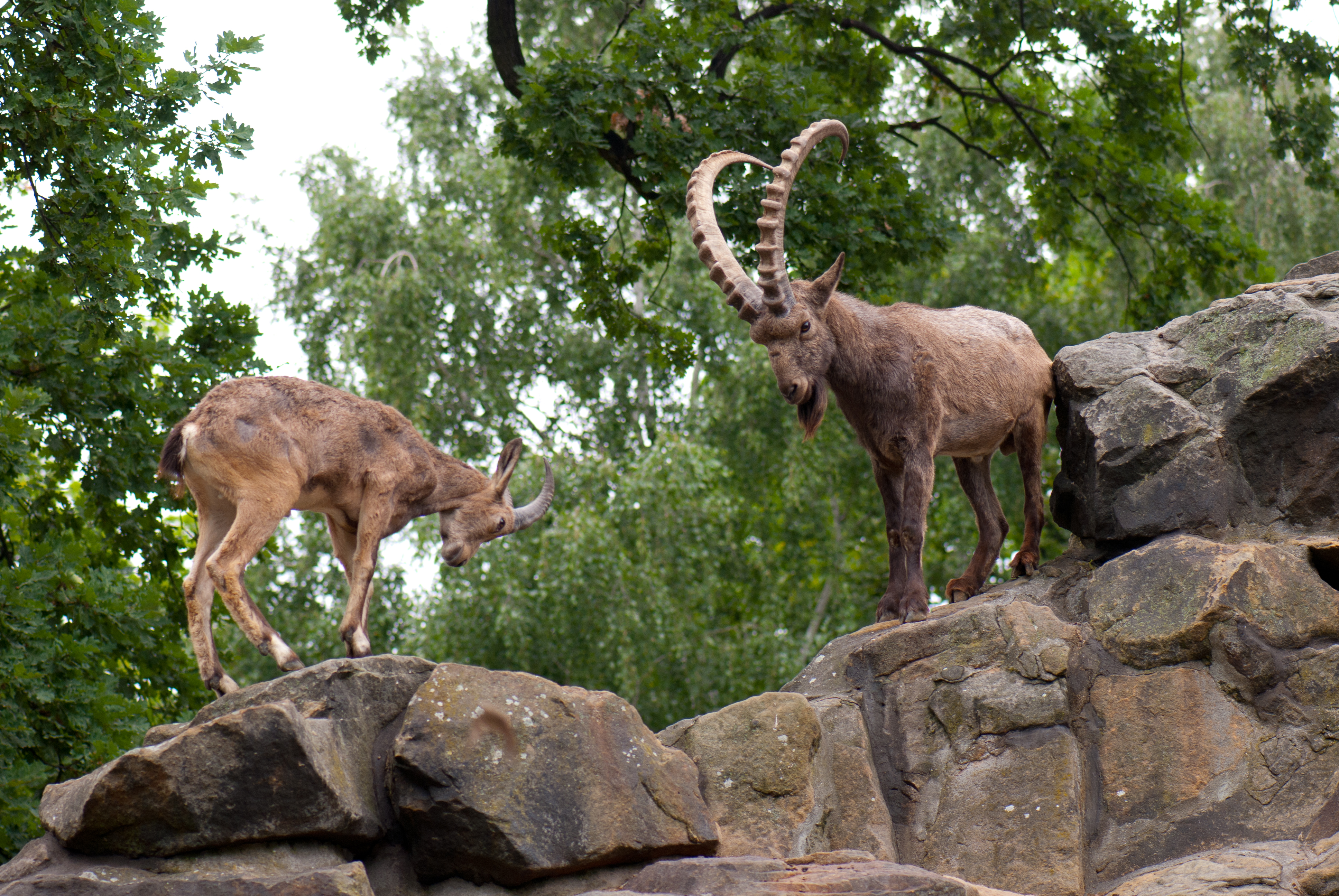Siberian ibex
Enlarge text Shrink text- Work cat.: 2004466451: Fedosenko, A.K. Sibirskiĭ gornyĭ kozel v Rossii ... 2003:
- Mammal species of the world WWW site, October 23, 2006
- ITIS WWW site, Oct. 23, 2006
- Walker's Mammals of the world, 1999:
- Web. 3
The Siberian ibex (Capra sibirica), also known using regionalized names including Altai ibex, Asian ibex, Central Asian ibex, Gobi ibex, Himalayan ibex, Mongolian ibex or Tian Shan ibex, is a polytypic species of ibex, a wild relative of goats and sheep. It lives in Central Asia, and is, by far, the most widely-distributed species in the genus Capra. In terms of population stability, Siberian ibex are currently ranked as Near Threatened, mostly due to over-hunting (mainly by wealthy, foreign hunters), low densities (in most areas) and overall decline; still, reliable data is minimal and difficult to come by, in addition to the animals’ expansive natural range, so accurate observations are still scant. The Siberian ibex has, formerly, been treated as a subspecies of the Eurasian Alpine ibex, and whether or not it is a single species or a complex of distinct units that stand out as genetically-distinct (at species level) is still not entirely clear. The Siberian ibex is the longest and heaviest member of the genus Capra, though its shoulder height is slightly surpassed by the markhor.
Read more on Wikipedia >
 Topic
Topic






